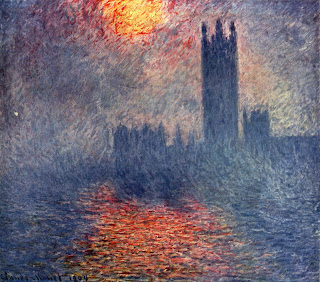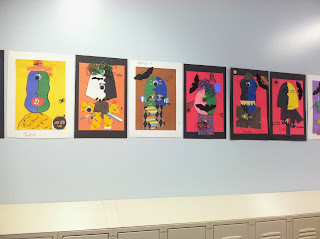Claude Monet was born on November 14, 1840, in Paris, France. He enrolled in the Academie Suisse. After an art exhibition in 1874, a critic insultingly dubbed Monet's painting style "Impression," since it was more concerned with form and light than realism, and the term stuck. Monet struggled with depression, poverty and illness throughout his life. He died in 1926.
The society's April 1874 exhibition proved to be revolutionary. One of Monet's most noted works in the show, "Impression, Sunrise" (1873), depicted Le Havre's harbor in a morning fog. Critics used the title to name the distinct group of artists "Impressionists," saying that their work seemed more like sketches than finished paintings.
While it was meant to be derogatory, the term seemed fitting. Monet sought to capture the essence of the natural world using strong colors and bold, short brushstrokes; he and his contemporaries were turning away from the blended colors and evenness of classical art. Monet also brought elements of industry into his landscapes, moving the form forward and making it more contemporary. Monet began to exhibit with the Impressionists after their first show in 1874, and continued into the 1880s.
Monet gained financial and critical success during the late 1880s and 1890s, and started the serial paintings for which he would become well-known. In Giverny, he loved to paint outdoors in the gardens that he helped create there. The water lilies found in the pond had a particular appeal for him, and he painted several series of them throughout the rest of his life; the Japanese-style bridge over the pond became the subject of several works, as well. (In 1918, Monet would donate 12 of his waterlily paintings to the nation of France to celebrate the Armistice.)
Sometimes Monet traveled to find other sources of inspiration. In the early 1890s, he rented a room across from the Rouen Cathedral, in northwestern France, and painted a series of works focused on the structure. Different paintings showed the building in morning light, midday, gray weather and more; this repetition was a result of Monet's deep fascination with the effects of light.
Besides the cathedral, Monet painted several things repeatedly, trying to convey the sensation of a certain time of day on a landscape or a place. He also focused the changes that light made on the forms of haystacks and poplar trees in two different painting series around this time. In 1900, Monet traveled to London, where the Thames River captured his artistic attention.
Monet died on December 5, 1926, at his home in Giverny. Monet once wrote, "My only merit lies in having painted directly in front of nature, seeking to render my impressions of the most fleeting effects." Most art historians believe that Monet accomplished much more than this: He helped change the world of painting by shaking off the conventions of the past. By dissolving forms in his works, Monet opened the door for further abstraction in art, and he is credited with influencing such later artists as Jackson Pollack, Mark Rothko and Willem de Kooning.
Since 1980, Monet's Giverny home has housed the Claude Monet Foundation.















































